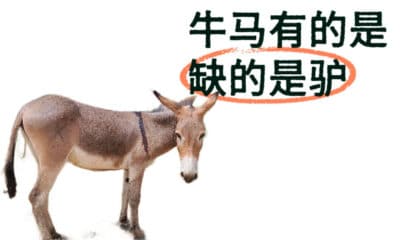China Insight
“What’s Modernisation?” – Chinese State Media Explain China’s ‘New Era’ With a Rap
No three-and-a-half-hour speech, but a three-and-a-half minute video explains China’s new strategies in this latest propaganda clip on social media.
Published
8 years agoon
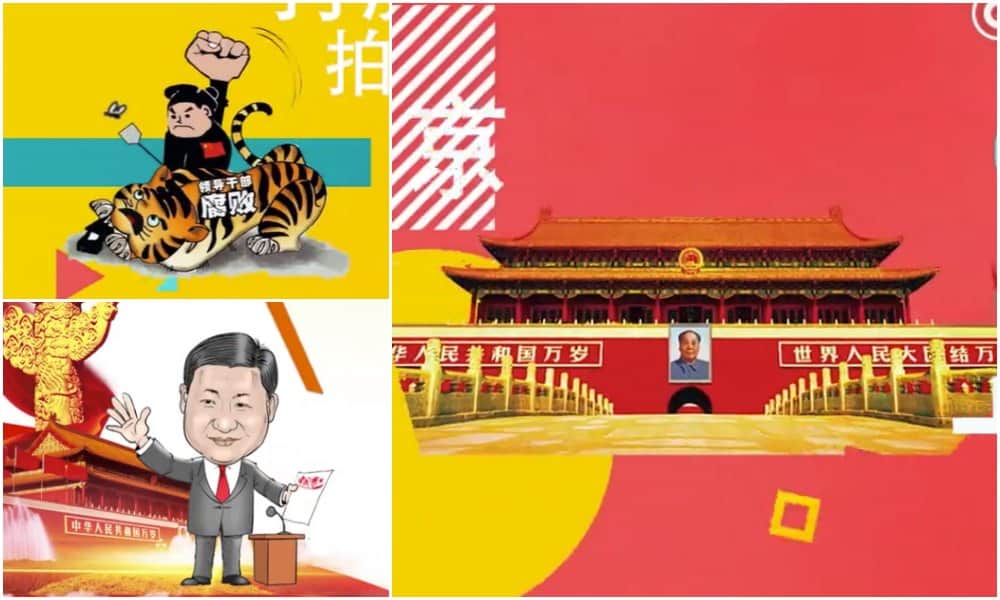
No three-and-a-half-hour speech, but a three-and-a-half minute video – Chinese state media explain China’s new strategies through catchy rap music and trendy graphics.
The much-anticipated 19th Party Congress opened last Wednesday in Beijing with Xi Jinping’s three-and-a-half-hour speech on “Thoughts on Socialism with Chinese Characteristics for a New Era” (新时代中国特色社会主义思想), which presented the Party’s new concepts, thoughts and strategies – with Xi himself at its core.
Shi-jiu-da (十九大, ‘big 19’) is the popular abbreviation for the 19th Congress of the Communist Party of China. This Plenum is held once every five years and is the highest level political meeting in the Chinese calendar. The meeting is also a big topic on Chinese social media; the Weibo hashtag for the ‘big 19’ event #十九大# was viewed over 3,6 billion times on Friday.
As with previous major political gatherings, speeches and rhetoric are not the only means by which the Party and state media seek to convey their message to the wider population. A video titled “What is modernization? Let us tell you in a rap!” (“现代化”是什么化?一段嘻哈告诉你!) is the latest in a series produced by state broadcaster CCTV. The video is being spread through social media.
The clip (click link or see embedded video below), that lays out the government’s stategies for China’s ‘new era’ through rap music with bright graphics, was widely distributed on Chinese social media this week by various media platforms and institutions, from the Economic Observer (@经济观察报) to the Ministry of Public Security.
The translation of the video’s full text* is as follows:
Let’s go!
This October in Beijing
…will all be arriving!
The time has come for 十九大(shi-jiu-da)
Listen out for the important voices
十九大 (shi-jiu-da) let’s say a little about it
There is a lot of information here
So, listen out carefully and I’ll speak slowly
In the past, China has always advanced courageously
As we have said before,
When difficult problems are solved then great things can be established!
Our nation is full of vigor and vitality!

Anti-corruption efforts are strong
Many tigers have been taken down
From rocket lift-offs to submarine exercises,
Technology is changing our lives
Haha, Haha, Haha,
As I’m going to show up next, we have plans going forward…
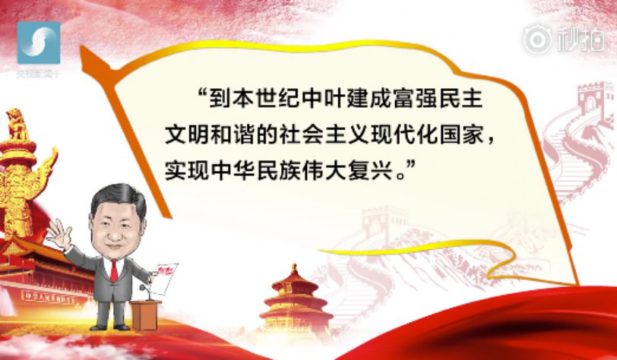
[Xi Jinping’s voice speaking:]
By the time we reach the middle period of this century, we will have built a modern socialist state which is rich and powerful, democratic, civilised, and harmonious. In this way, we will have realized the great rejuvenation of the Chinese people.
[Rap continues:]
But, building in accordance with the needs of modernization
What even is modernization?
Let me tell you:
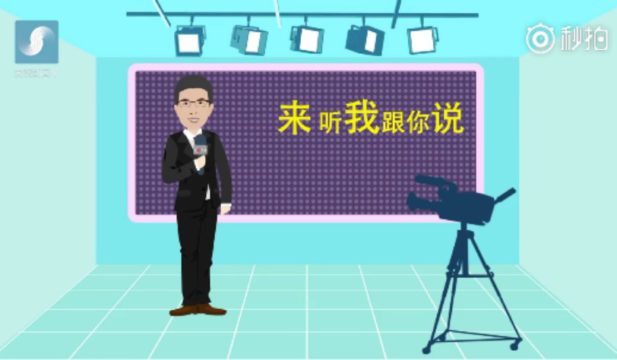
[End of rap, start of explanation by lecturer:]
100 years ago, Sun Yat-sen set out a blueprint for modernization in ‘Strategy for Building a Nation’: build train tracks, repair the roads, construct large ports. At that time, this was still considered fantastical and unrealistic.
But today, train lines criss-cross the whole nation! They run N-S between Beijing-Guangdong-Shanghai, as well as across the well-trodden route of Lanzhou-Chengdu-Chongqing. The length of the journey on the bullet trains just keeps reducing!
Again, at the time the People’s Republic was founded, not even a tractor could be built! Thus, building a modern, industrial socialist nation became our aim.
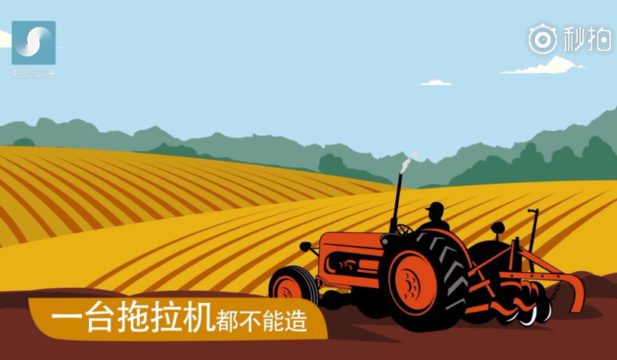
In 1954, the first National People’s Congress was held. This was the first time the aim of achieving the Four Modernizations was clearly referenced. In just the next few years, factory after factory was built, including those of Anshan Steel works and Changchun car manufacturers.
Our workers are powerful!
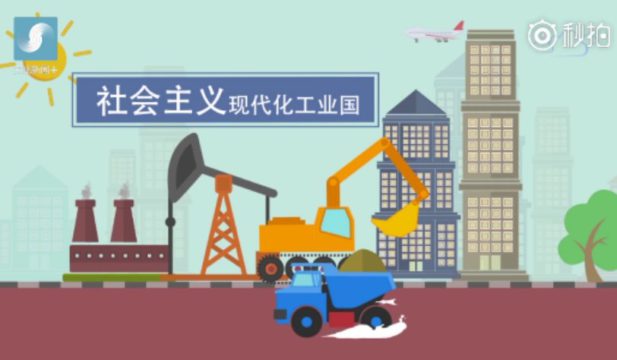
This was a song I would listen to when I was young, and hearing it I would know my dad would soon finish work for the day and so I would quickly pack away all my marbles. Entering the period of opening and reform, Deng Xiaoping named the Four Modernizations as the way to ‘Chinese Modernization’, as well as wanting to become a middle-income nation.
In the 1970s, when people married, the three major durable consumer goods were still watches, bicycles and sewing machines. In the 80s, this became fridges, color TVs, and washing machines, and by the 90s changed again into air conditioning, cameras, and camcorders.
[Xi Jinping’s voice:]
Now, information technologies such as the internet are changing with each passing day. This is leading a new revolution in society and bringing new dimensions into human lives.

[Presenter continues:]
A report from the 18th Party Congress, published on 8th November 2012, mentioned the ‘4 New Modernisations.’ This has led to the implementation of an innovation-driven development strategy. Over the last 5 years, the major technological developments we have made have accumulated further and further. The computing in the Sunway Taihu Light is the most advanced in the world.
The quantum satellite Mozi Hao is unparalleled. The Tiangong 2 satellite has been sent off smoothly. Each of these wondrous engineering projects is a feat of its own! What a country!
In 2013, General Secretary Xi Jinping then added one more modernization into the fold, that being to ‘continue to advance the nation’s governing system, and to modernize our governing capabilities.’
Modernisation as a whole is very impressive. Frankly speaking, only this modernization of the inner qualities of officials and organizations will enable them to govern the country and change the civilized norms.We don’t take a break from modernization!
[Rap continues:]
Yeah, now that we have become a middle-class society
We have reached the most important section of our reform agenda
What are the issues that affect the lives of the middle class?
At this stage in the development of Socialism with Chinese Characteristics,
People are heading in the direction of a better life
The Party must remember
This is a new beginning!
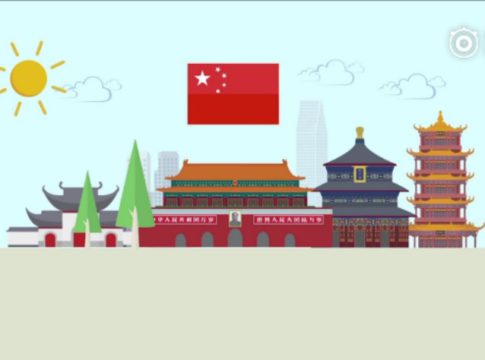
In what direction is the bullet train heading?
After 200 years, will the Chinese dream have been realized?
What expectations do Chinese families have for their future?
Will the 十九大 (shi-jiu-da) answer these questions for you?
Of course!
Both the design and the genre of the new clip show some resemblance to clips launched during the Belt and Road Summit earlier this year.
On Weibo, a platform that is heavily controlled during the 19th National Congress, the video was shared hundreds of times. Although discussions on the video are limited due to current restrictions, one surprised netizen just posted: “Can I actually comment on this?!”
By Alice Mingay
Follow @whatsonweibo
* Full Text:
Let’s go!
在十月里的北京
。。。。都到这里 (3-4)
十九大要来了
听听到重要的声音
十九大,说点嘛?
这里信息有点多
你听我慢慢说
过去砥砺奋进
也我们互相说过
难提解决大事办成
祖国朝气蓬勃
反腐力度很大
打掉的老虎很多
胖五升空,蛟龙下水
科技改变生活
哈哈,哈哈,哈哈
接下来,我们还有个目标
[习近平的声音:]
到本世纪中叶建成富强民主
文明和谐的社会主义现代化国家,
实现中华民族伟大复兴。
–中共中烟总书记、国家主席、中央军委主席习近平
建设现代化
那现代化是什么?
来,听我跟你说
百年前,孙中山在[建国方略]里描绘了现代化的蓝图
建铁路、修公路、建造水平大海港
这些的当时,还被认为是‘空想’
而如今,京广、京沪穿南北
兰渝铁路通蜀道
复兴号路途时间再修短
再说,新中国刚成立时
一台拖拉机都不能造
建成社会主义现代化工业国就是我们的目标
1954年,第一届全国人民代表大会
第一次明确提出要实现四个现代化
随后的几年里,鞍山无缝钢管厂、长春第一汽车制造厂一个厂接一个厂
咱们工人有力量
‘咱们工人有力量’
小时候一听到这首歌就知道爸爸要下班了,赶紧把玻璃球收起来
迈入改革开放新时期,邓小平把实现四个现代化的目标称为‘中国式的现代化’,也就是‘小康之家’。
70年代,人们结婚, ‘三大件’还是手表自行车缝纫机
80年代,冰箱、彩电、洗衣机
90年代变成空调、音像、录像机
现在以互联网为代表的信息技术日新月异
引领了社会生产新变革
创造了人类生活新空间
2012年11月8号的中共十八大报告提出了 ‘新四化’
实施创新驱动发展战略
这五年,祖国的科技发展硕果累累
超级计算机“神威-太湖之光”世界第一
量子卫星‘墨子号’世界独一无二
‘天宫二号’顺利发射
奇迹工程一个个,厉害了,我的国
2013年习近平总书记又给这新四化加了一化
不断推进国家治理体系和治理能力现代化
整个现代化,有点厉害了
说白了,就是国家机构官员素质的现代化是治理国家变得文明规范
建设现代化,我们不放假
Yeah, 如今全面建成小康社会
到最关键的议程
小康心内还是什么事关你我的生活
中国特色社会主义进行的发展阶段
人民群众向往的美好生活
党中要记得
这是一个新的起点
复兴号驶向哪儿?
两个一百年后,中国梦实现了吗?
对于祖国家庭未来,还有那些期待?
来过这十九大,还为你来解答?
必须的
Edited by Manya Koetse
Spotted a mistake or want to add something? Please let us know in comments below or email us.
©2017 Whatsonweibo. All rights reserved. Do not reproduce our content without permission – you can contact us at info@whatsonweibo.com.
Alice Mingay is a final year undergraduate Chinese Studies at the University of Oxford. She has spent over a year in Beijing and has a particular interest in Chinese Internet and Chinese Law. She is currently researching the development of China’s e-courts.
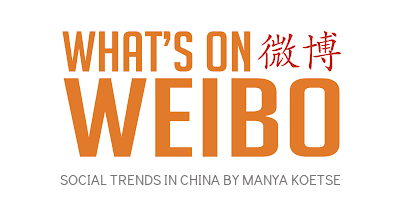
You may like
China Insight
“Jiangyou Bullying Incident”: From Online Outrage to Offline Protest
“You think we’re scared of you? It’s not like we haven’t been to jail before.”
Published
2 months agoon
August 6, 2025
These days have been filled with tension and anger in the city of Jiangyou (江油市), Sichuan, after a rare, large-scale protest broke out following public outrage over a severe bullying incident and how it was handled.
The bullying incident at the center of this story happened outside school premises in Mianyang on the afternoon of July 22. Footage of the assault, recorded by bystanders at the scene, began circulating widely online on August 2, sparking widespread outrage among concerned netizens, many of them worried parents.
The violent altercation involved three girls between the ages of 13 and 15 who ganged up on another minor, a 14-year-old girl named Lai (赖).
After Lai and a 15-year-old girl named Liu (刘) reportedly had a dispute, Liu gathered two of her friends—the 13-year-old also named Liu (刘) and a 14-year-old named Peng (彭)—to gang up on Lai.
The three underage girls lured Lai to an abandoned building, where they subjected her to hours of verbal and physical violence. The footage showed how they took turns in kicking, slapping, and pushing her.
At one point, after Lai said she would call the police, one of the bullies yelled: “You think we’re scared of you? It’s not like we haven’t been to jail before. I’ve been in more than ten times—it doesn’t even take 20 minutes to get out” (“你以为我们会怕你吗?又不是没进去过,我都进去十多次了,没二十分钟就出来了”).
That same night, the incident was reported to police. It took authorities until August 2 to bring in all involved parties for questioning, and a police report was issued on the morning of Monday, August 4.
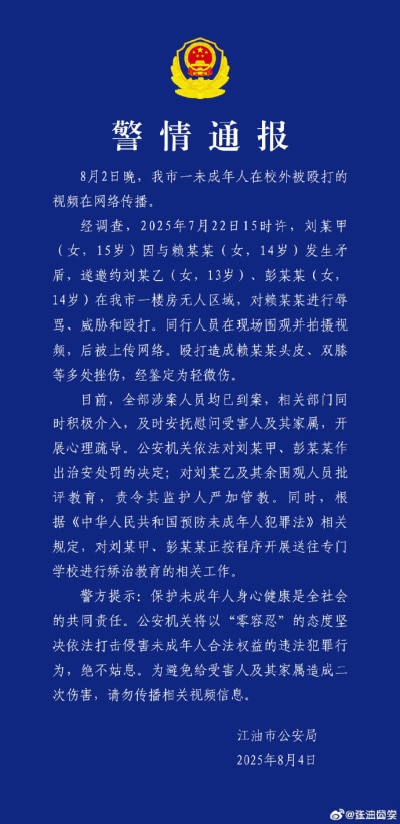
Police report by Jiangyou Public Security Bureau, confirming the details of the incident and the (legal) consequences for the attackers.
Two of the girls (the 15- and 14-year-old) were given administrative penalties and will be sent to a specialized correctional school. The younger Liu and other bystanders were formally reprimanded.
“Parents Speak Out for the Bullied Girl”
The way the incident was handled—not just the relatively late official report, but mostly the perceived lenient punishment—triggered anger online.
Many people who had seen the video responded emotionally and felt that the underage girls should be stripped of their rights to take their exams, and that the bullying incident should forever haunt them in the same way it will undoubtedly haunt their victim.
Especially the phrase “It’s not like I haven’t been taken in [to jail] before” struck a chord, as it showed just how calculated the bullies were—and how, by counting on the leniency of the Chinese judicial system for minors, they made the system complicit in their determination to turn those hours into a living hell for Lai.
China has been dealing with an epidemic of school violence for years. In 2016, Chinese netizens were already urging authorities to address the problem of extreme bullying in schools, partly because minors under the age of 16 rarely face criminal punishment for their actions.
Since 2021, children between the ages of 12 and 14 can be held criminally responsible for extreme and cruel cases resulting in death or disability—but their legal prosecution must first be approved by the Supreme People’s Procuratorate (SPP).
It has not done much to stop the violence.
Discussions around extreme bullying like this have repeatedly flared up over the years, such as in 2020, when a 15-year-old schoolboy named Yuan (袁) in Shaanxi was fatally beaten and buried by a group of minors.
Last year, a young boy named Wang Ziyao (王子耀) was killed by three classmates after suffering years of bullying. His body was found in a greenhouse just 100 meters from the home of one of the suspects, and the case shocked and enraged local residents.
But the problem is widespread among girls, too.
In 2016, we already reported on how so-called ‘campus violence videos’ (校园暴力视频) had become a concerning trend. In these kinds of videos—often showing multiple bullies beating up a single victim on camera—it’s not uncommon to see girls as the aggressors.
Girls often form cliques to gang up on a victim to show that they are in control or to gain popularity. They also tend to be more inclined than boys to make cruel jokes or stage pranks meant to embarrass or humiliate their target. This may partly explain why there seem to be more campus violence videos on Chinese social media showing girls bullying girls than boys bullying boys.
In the case of Lai, she appears to have been particularly vulnerable. One of her relatives posted online that her mother is deaf and mute, and her father allegedly is disabled. This fact may have contributed to why Lai was repeatedly targeted and bullied by the same group of girls, who reportedly took away her phone and socially isolated her at school.
In response to the incident, netizens started posting the hashtag “Parents Speak Up for the Bullied Girl” (“#家长们为被霸凌女孩发声#), not only to support Lai and her family, but to demand harsher punishments for school bullies and for stricter crackdown on this nationwide problem.
From Online Anger to Offline Protest
While many people spoke out for Lai online, hundreds also wanted to show up for her in person.
On August 4, dozens of people gathered in front of the Jiangyou Municipal Government building (江油市人民政府) to demand justice and support Lai’s parents, who had come to express their grievances to the authorities—at one point even bowing to the ground in a plea for justice to be served for their daughter.

Footage and images circulating on social media showing the parents of Lai, the victim, bowing on the ground to demand justice from authorities.
As the crowd grew larger, tensions escalated, eventually leading to clashes between protesters and police.
The arrests at the scene did little to ease the situation. As night fell, the mood grew increasingly grim, and some protesters began throwing objects at the police.
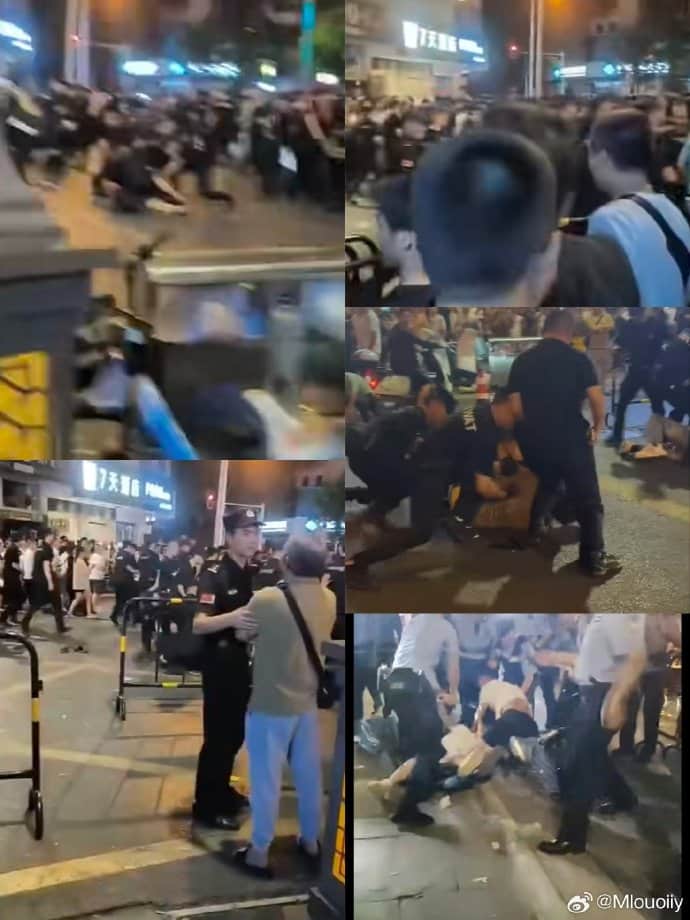
Images of the protest, posted on Weibo.
Near the east section of Shixian Road (诗仙路东段), more people gathered. Hundreds of individuals filming and livestreaming captured footage of the police crackdown—officers beating protesters, dragging them away, and deploying pepper spray.

Netizens’ digital artwork about the bullying incident, the parents’ grievances, and the public protest and its crackdown in Jiangyou. Shared by 程Clarence.
Although the protests briefly gained traction on social media and became a trending topic on Weibo, the search term was soon removed from the platform’s trending list.
Lasting Mental Scars
On Tuesday, August 5, several topics related to the Jiangyou bullying incident began trending again on Chinese social media.
On the short video app Kuaishou, a collective demand for justice surged to the number one spot, under the tag “A large number of Jiangyou parents demand justice for the victim” (江油大批家长为受害学生讨公道).
As of now, none of the perpetrators’ families have come forward to apologize.
As for Lai—according to the latest reports, she did not suffer serious physical injuries from the bullying incident, but according to her own parents, the mental scars will last. She will need continued mental health support and counseling going forward.
Although many posts about the incident and the ensuing protests have been taken offline, ‘Jiangyou’s Bullying Incident’ has already become one more case in the growing list of brutal school bullying incidents that have surfaced on Chinese social media in recent years. The heat of local anger may fade over time, but the rising number of such cases continues to fuel public frustration nationwide—especially if local authorities fail to do more to address and prevent school bullying.
“Not being able to protect our children, that’s a disgrace to our schools and the police,” one commenter wrote: “I want to thank all those mothers who have raised their voices for the bullied child. Each of us must say no to bullies, and we must do all we can to stop them. I hope the lawmakers agree.”
By Manya Koetse
(follow on X, LinkedIn, or Instagram)
Spotted a mistake or want to add something? Please let us know in comments below or email us. First-time commenters, please be patient – we will have to manually approve your comment before it appears.
©2025 Whatsonweibo. All rights reserved. Do not reproduce our content without permission – you can contact us at info@whatsonweibo.com.
China Insight
The Secret Life of Monks: Shi Yongxin’s Shaolin Scandal Casts a Shadow on Monastic Integrity
“To put it bluntly, temples have been places of deception, corruption, opportunism, and exploitation since ancient times.”
Published
3 months agoon
July 28, 2025
This week, news about a well-known Chinese monk going off the Buddhist path has triggered many discussions on Chinese social media.
The story revolves around Shi Yongxin (释永信), the head monk at China’s famous Shaolin Temple (少林寺) in Dengfeng, Henan. Shi is suspected of embezzlement of temple funds and illicit relationships, and is currently under investigation.
In recent days, wild rumors have been circulating online claiming that Shi fled to the United States after being exposed. On July 26, a supposed “police bulletin” began circulating, alleging that Shi Yongxin had attempted to leave the country with seven lovers, 21 children, and six temple staff. It also claimed he was stopped by authorities before exiting China, that he had secretly obtained U.S. citizenship a decade ago, and that he had misused donations and assumed fake identities.
Although that specific report has since been refuted by Chinese official media, it quickly became clear that there was real fire behind all that smoke.

The report that circulated online and was later confirmed to be fake
Because despite all the sensationalized gossip (some posts even claimed Shi had 174 illegitimate children!), what’s certain is that Shi Yongxin seriously crossed the line. On July 27, 2025, the Shaolin Temple Management Office (少林寺管理处) issued an official statement through its verified channels, including its WeChat account. The statement read:
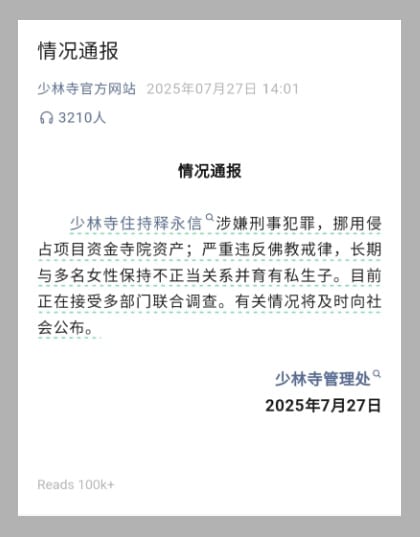
The report that circulated online and was later confirmed to be fake.
Shi Yongxin, the Abbot of Shaolin Temple, is suspected of criminal offenses, including misappropriating and taking project funds and temple assets. He seriously violated Buddhist discipline, maintained improper relationships with multiple women over a long period and fathered illegitimate children. He is currently under joint investigation by multiple departments. Relevant information will be made public in due course.
Shaolin Temple Management Office
July 27, 2025
China’s Buddhist Association (中国佛教协会) also released a statement on July 28, in which it stated that, in coordination with the Henan Provincial Buddhist Association (河南省佛教协会), Shi Yongxin has been officially stripped of his monastic status.
Various Chinese media sources report that Shi Yongxin was taken away by police on Friday, July 25. Chinese media outlet Caixin suggests that it must not have come as a complete surprise, since Shi had allegedly already been restricted from leaving the country since around the Spring Festival period (late January 2025) (#释永信春节前后已被限制出境#).
About Shi Yongxin
Shi Yongxin is not just any abbot. He’s the abbot of the Shaolin Monastery (少林寺), which is one of the most famous Buddhist temples in the world and is known as the birthplace of Shaolin Kung Fu. The temple was founded in 495 CE. Besides being a Buddhist monastery, it also operates as a popular tourist attraction, a kung fu school, and a cultural brand.
Shi has been running the monastery for 38 years, a fact that also went trending on Weibo these days (#释永信已全面主持少林寺38年#, 140 million views by Monday).
Shi Yongxin is the monastic name of Liu Yingcheng (刘应成), born in Yinshang county in Fuyang, Anhui, in 1965. He came to Shaolin Temple in 1981 and became a disciple of abbot Shi Xingzheng (释行正), who passed away in 1987. Shi Yongxin then followed in his footsteps and managed the temple affairs. He formally became head monk in 1999.
Moreover, Shi Yongxin reportedly served as President of the Henan Provincial Buddhist Association since 1998 and as Vice President of the Buddhist Association of China since 2002.

Shi Yongxin, photos via Weibo.
Shi Yongxin was thus an incredibly powerful figure—not only because of the decades he spent overseeing temple affairs, but also due to his influence within public, institutional, and religious spheres.
Holding such a visible role, Shi Yongxin (释永信) also had (or has—though it’s unlikely he’ll ever post again) a Weibo account with over 882,000 followers (@释永信师父). His last post, made on July 24, was a Buddhist text about the ‘Pure Land’ (净土)—a realm said to make the path toward enlightenment easier.
That post has since attracted hundreds of replies. While some devoted followers express disbelief over the scandal, many others respond with cynicism, questioning whether anything about Buddhism remains truly ‘pure.’
One widely shared post shows an artist sitting in front of a painting of Shi Yongxin, writing, “Worked on this painting for six months, just finished late last night—feels like the sky’s collapsed.” The second picture, posted by someone else, says, “Just change it a bit.”

One aspect of the scandal fueling online discussions is the fact that Shi Yongxin had led the monastery for so long. Rumors about his “chaotic private life” and unethical behavior surfaced years ago, going back to at least 2015 (#释永信10年前就曾被举报私生活混乱#; #释永信曾被举报向弟子索要供养钱#). One of the questions now echoing across social media is: why wasn’t he held accountable sooner? “Who was protecting him?”
“The Tip of the Iceberg”
The Shi Yongxin scandal does not just hurt the reputation and cultural brand of the Shaolin Monastery; it also damages a certain image of Buddhist monks as a collective of people with true faith and integrity.
According to well-known knowledge blogger Pingyuan Gongzi Zhao Sheng (@平原公子赵胜), many people’s understanding of abbots or Buddhist masters (“方丈大师们”) is flawed, since it’s generally believed they attained their high positions within the monasteries due to their moral virtue or deep understanding of Buddhism. In reality, Zhao Sheng argues, these individuals often rise to power because they are skilled at earning money and gaining influence.
“To put it bluntly,” Zhao Sheng writes, “temples have been places of deception, corruption, opportunism, and exploitation since ancient times.”
The blogger argues that much of the influence and power of Buddhist masters was stripped away under Mao Zedong, but that some new famous monks rose in the 1980s, using their skills and connections to rebuild temples and turn them into thriving enterprises.
“If you want to find a few people in temples who truly have faith, who truly have personal integrity, and who are truly dedicated to saving all living things, it’s not that they don’t exist—but it’s rather difficult, like finding a needle in a haystack,” Zhao Sheng wrote.
Some commenters suggest that Shi Yongxin is just the tip of the iceberg (“冰山一角”). They believe that if someone as influential as him can be involved in such misconduct—despite whistleblowers having tried to expose him for over a decade—there must be many more cases of power abuse and corruption within China’s monasteries.
“I previously donated money to the temple,” one commenter on Xiaohongshu wrote: “Although it wasn’t much, it does make me a bit uncomfortable now.”
Another person posted that the Shi Yongxin scandal gave them a sense of despair.
Some older posts about the extravagant lifestyles of head monks — including their luxury cars — have also resurfaced online and are once again making the rounds, suggesting that netizens are actively revisiting other potential instances of misconduct within the monastic world.
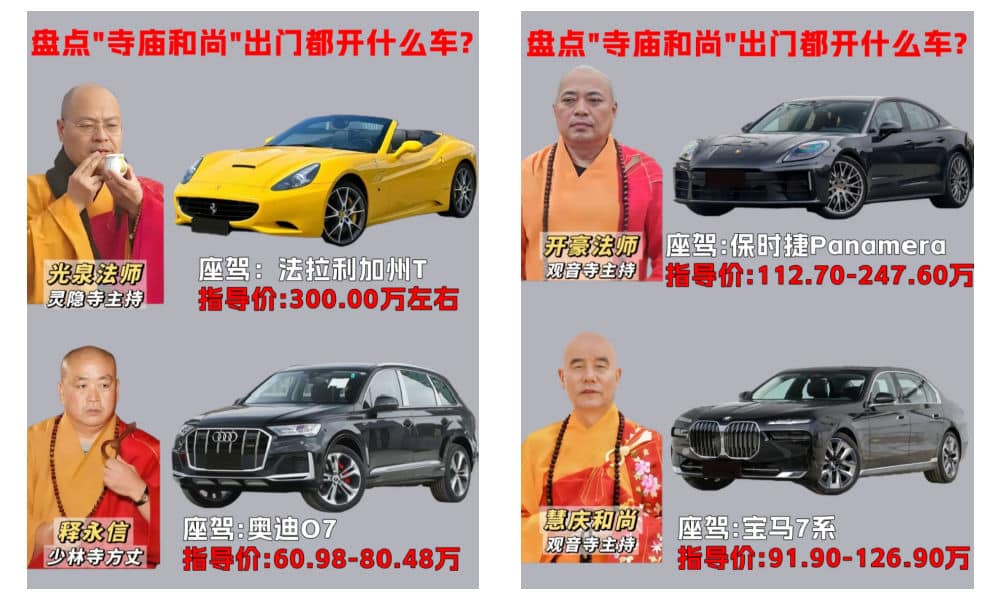
Abbot Guangquan Fashi (光泉法师) with a Ferrari California T, Kaihao Fashi (开豪法师) with a Porsche Panamera, Shi Yongxin (释永信) linked to an Audi Q7, and Huiqing (慧庆) and a BMW 7 Series.
One image that resurfaced online shows Shi Yongxin—allegedly driving an Audi Q7—alongside other abbots, such as Guangquan Fashi (光泉法师), the head monk of Lingyin Temple (灵隐寺), who is associated with a Ferrari.
More images like these are now circulating, as people delve into the ‘secret lives of monks’ beyond the spiritual, shifting focus to their material lives instead.

Monks from major temples, including Qin Shangshi (钦尚师) of Famen Temple, E’erdeni (鄂尔德尼) of Jokhang Temple in Lhasa, Yin Le (印乐) of Baima Temple, and Huiqing (慧庆) of Baishou Temple, are rumored to be associated with high-end cars like BMWs, a Porsche Cayenne, and a Range Rover.
While the results of the investigation into Shi Yongxin are still pending, many netizens are already looking beyond him. One person writes: “Are you realizing now? It’s not just Shaolin Temple that has money, other temples aren’t exactly short on money either.”
Another person wonders: “Are the monks in today’s temples actually still truly devoted to spiritual practice at all?”
By Manya Koetse
(follow on X, LinkedIn, or Instagram)
Spotted a mistake or want to add something? Please let us know in comments below or email us. First-time commenters, please be patient – we will have to manually approve your comment before it appears.
©2025 Whatsonweibo. All rights reserved. Do not reproduce our content without permission – you can contact us at info@whatsonweibo.com.
Subscribe
What’s on Weibo is a reader-supported publication, run by Manya Koetse (@manyapan), offering independent analysis of social trends in China for over a decade. To receive new posts and support our work, consider becoming a paid subscriber.

Get in touch
Would you like to become a contributor, or do you have any tips or suggestions? Get in touch here!

From Tents to ‘Tangping Travel”: New Travel Trends among Young Chinese

House of Wahaha: Zong Fuli Resigns

How the “Nexperia Incident” Became a Mirror of China–Europe Tensions

China Faces Unprecedented Donkey Shortage Crisis

Nanchang Crowd Confuses Fan for Knife — Man Kicked Down and Taken Away

“Jiangyou Bullying Incident”: From Online Outrage to Offline Protest

The Rising Online Movement for Smoke-Free Public Spaces in China

China Trend Watch: Pagoda Fruit Backlash, Tiananmen Parade Drill & Alipay Outage (Aug 11–12)

From Schadenfreude to Sympathy: Chinese Online Reactions to Charlie Kirk Shooting

Passing the Torch from ‘Ne Zha’ to ‘Nobody’: China’s Box Office Poster Relay Tradition
Popular Reads
-

 China Memes & Viral3 months ago
China Memes & Viral3 months agoHidden Cameras and Taboo Topics: The Many Layers of the “Nanjing Sister Hong” Scandal
-

 China Books & Literature12 months ago
China Books & Literature12 months agoThe Price of Writing Smut: Inside China’s Crackdown on Erotic Fiction
-

 China Insight6 months ago
China Insight6 months agoUnderstanding the Dr. Xiao Medical Scandal
-

 China Memes & Viral10 months ago
China Memes & Viral10 months agoOur Picks: Top 10 Chinese Buzzwords and Phrases of 2024 Explained



